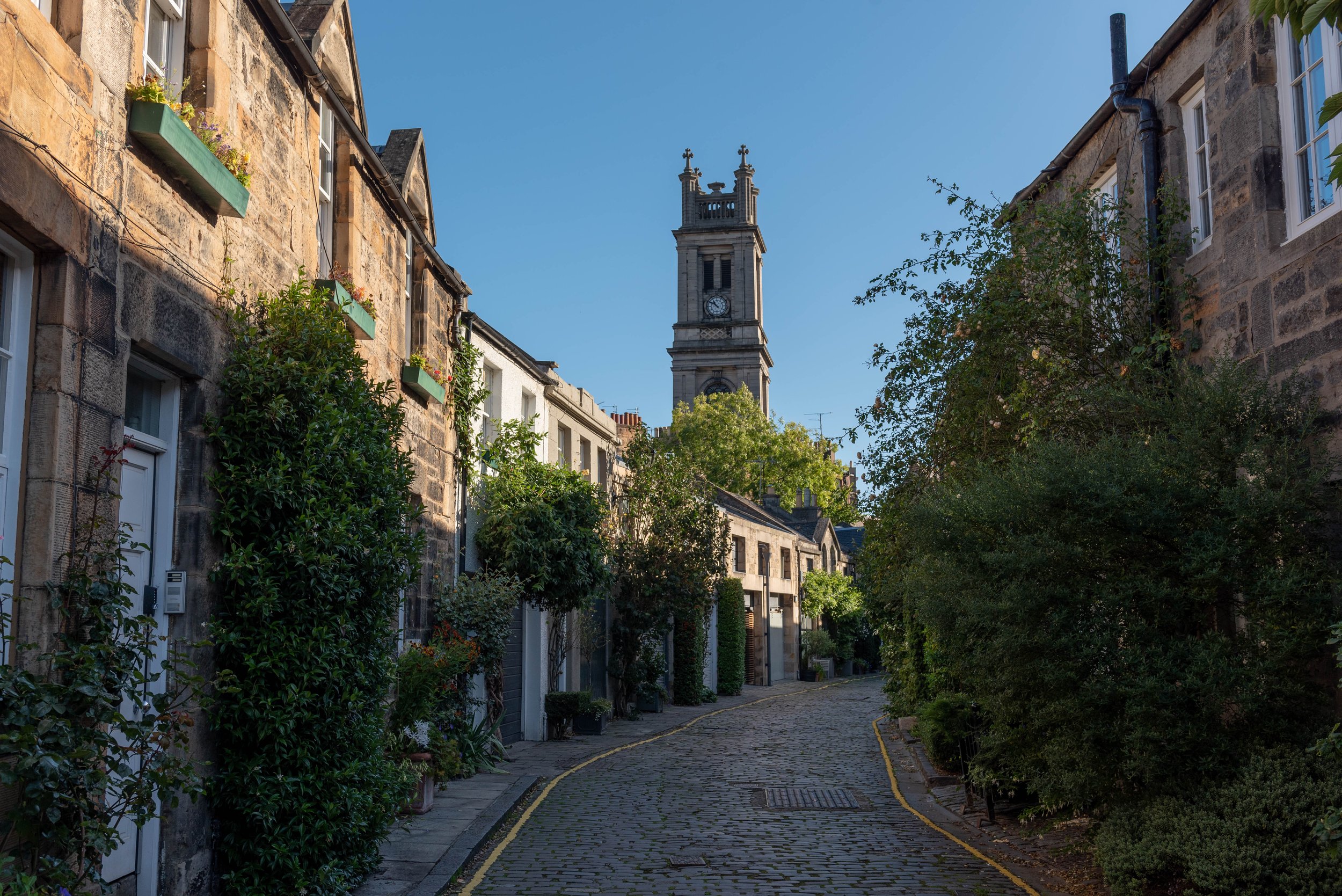A First-Timer’s Guide to Edinburgh
Last updated: 26 March 2023
Are you planning to visit Edinburgh for the first time? Read up on the must-visit attractions but not sure about the rest? Let us fill you in on everything you need to know for your first visit to Edinburgh!
This blog post accompanies our YouTube video below, so be sure to check it out!
Time Zone
Edinburgh is in the Greenwich Mean Time (GMT) time zone, which is the same as London. During Daylight Savings Time, it changes to British Summer Time (BST), which is GMT +1.
Language
Many languages are spoken in Edinburgh and Scotland, but the main language spoken is English. Scottish Gaelic and Scots are also spoken in Scotland, though to a lesser extent.
Scottish Gaelic is the founding language of Scotland but was heavily suppressed in the late 18th century during the Highland Clearances, which were the evictions of tenants in the Highlands and Islands. However, it is starting to make a comeback, with Scottish Gaelic being spoken by around 60,000 Scottish people. Scots is another native Scottish language and has appeared in literature, poetry, and songs. According to the 2011 census, 1.5 million people stated that they could speak Scots.
UK Plug
The UK uses a type G plug, which has three rectangular prongs that form a triangle shape. The plugs operate on a 230V supply voltage and 50Hz. Devices like mobile phones, laptops, and camera batteries will charge without issue with a travel adapter. However, you may need a voltage converter for other appliances like hairdryers and hair straighteners or curlers.
Currency
Scotland uses the pound sterling (£), which is the same as the rest of the UK (England, Wales, and Northern Ireland). UK banks all print their own notes, which is why you might find the same value notes with different faces on them.
In Scotland, the Bank of Scotland, the Royal Bank of Scotland, and Clydesdale Bank all print their own notes. An interesting tidbit about Scottish notes is that the notes are printed by retail banks as opposed to central banks (for example, the Bank of England), meaning they are not technically legal tender anywhere in the UK (including Scotland). These banks are required to hold the same sum of notes they issue in Bank of England notes.
We’ve never encountered any issues with having Scottish notes, but we have heard of Scottish notes being refused in England. Some countries might also refuse to exchange money if you offer up Scottish notes. It is therefore advisable that before you leave Scotland, you exchange any leftover Scottish notes for Bank of England notes. You can generally go to any local bank and ask them to exchange your notes for you.
How to Pay
Cash and debit or credit cards are accepted. Since the pandemic, many businesses prefer customers to pay by debit or credit card, but it doesn’t hurt to have some cash with you as well. When it comes to cards, Visa and Mastercard are the most widely accepted.
Where to Withdraw Cash
Most ATMs offer free cash withdrawals and are dotted all over the city. A simple Google Maps search should show you the ATMs closest to you. Just make sure that the ATM clearly states that cash withdrawals are free before you use it. Keep in mind, though, that this just means there is no ATM fee, so be sure to check if your card has any fees for cash withdrawals before you travel.
Weather & Climate
It’s not likely that anyone comes to Edinburgh for its sunshine and warm temperatures! The climate is quite mild in Edinburgh year-round but can be quite windy. Oftentimes, you can experience the sun, clouds, rain, and wind all in one day. An umbrella would come in handy, but only if it’s not windy!
Below, you’ll find a table of the average highs and lows and days of rain per month.
| Month | High/Low (C) | Days of Rain |
|---|---|---|
| January | 6/1 | 11 |
| February | 7/1 | 8 |
| March | 9/2 | 9 |
| April | 11/4 | 8 |
| May | 14/6 | 9 |
| June | 17/9 | 9 |
| July | 19/11 | 9 |
| August | 18/11 | 9 |
| September | 16/9 | 9 |
| October | 13/6 | 11 |
| November | 9/3 | 10 |
| December | 7/1 | 11 |
In regards to the rain, the good news is that rain in Edinburgh does tend to be very on and off, so it’s usually unlikely that you’ll be soaked from morning until night. With that said though, do be sure to check the weather forecast in the morning before you head out because even if the sun is gloriously rising in front of you, it may very well rain in the afternoon!
People that are used to living a bit closer to the equator are sometimes surprised at how long the summer days and how short the winter days are in Edinburgh. On the longest day of the year, the sun rises just before 04.30 and sets just after 22.00. And on the shortest day of the year, the sun rises just after 08.30 and sets just after 15.30.
What Clothes to Bring
Layers, layers, and more layers! As Edinburgh’s weather can be unpredictable, your best bet is to bring layers and waterproof clothing as well as quality walking shoes.
Best Time of Year to Come
‘Best’ is relative of course. If you like crowds and don’t mind paying more for accommodation, then come to Edinburgh in August, when the world’s biggest arts festival - Edinburgh Festival Fringe - comes to life for the entire month (along with a multitude of other festivals).
If you hate crowds, then don’t come in August. Like many cities, the shoulder seasons (spring and autumn) are nice times to visit Edinburgh.
How Long to Stay
Because Edinburgh is a very compact city, you can see a lot in two to three days. Staying a few more days will allow you to use Edinburgh as a base to explore surrounding areas for day trips. Be sure to check out our blog post about the best day trips by train from Edinburgh!
Where to Stay
If you really want to be in the thick of everything, Old Town or New Town would be the best areas to stay. Going a little bit further (although not by that much), Stockbridge, Dean Village, and the Southside (southeast of Old Town) are good options as well. For first-timers, we would recommend Old Town or New Town. There are a variety of accommodation options to suit all budgets.
How to Get Around
Edinburgh is a very compact city, which makes walking the best way to get around (and also why we mentioned bringing quality walking shoes earlier). Do note that the city also does have seven hills, so some areas are a bit steeper than others!
For destinations a bit outside of the city centre, it’s easy enough to take the bus. Lothian Buses is the main bus provider in Edinburgh and they have loads of buses and bus stops that can take you to just about anywhere. Their app is handy to find out which bus you need to take or you can always just use Google Maps.
Check out our in-depth YouTube video on how to get around Edinburgh!
How Much to Budget
Of course, how much you decide to budget largely depends on how much you have to play with. Below, we’ll provide per person estimates on daily accommodation, food, and transportation for low, medium, and high budgets. This is also assuming you’re visiting in the shoulder, not high season.
| Low | Medium | High | |
|---|---|---|---|
| Accommodation | £20-30 Hostel |
£70-90 2-3 star hotel |
£150+ 4-5 star hotel |
| Food | £10-15 Cooking all meals |
£30-40 Eating out once |
£50+ All meals eaten out |
| Transportation | £0 Walk! |
£4.50 Bus |
£10-20 Taxi/Uber |
| Total Per Day | £30-45 | £105-135 | £210+ |
Water
Tap water is safe to drink in Scotland! Scottish Water introduced Top Up Taps across the country, where you can refill your reusable water bottle. There is a handy online map that shows all Top Up Tap locations in Scotland.
Tipping
The tipping culture in the UK is not as ‘extreme’ as some places like North America, where workers often have to rely on tips to make up part of their salaries. Tipping is quite common though, so here are a few tips (no pun intended!) on tipping in various places:
Restaurants: If there is no service charge already added, a 10% tip is often enough.
Hotels: Feel free to tip housekeepers, bellhops, and doormen a pound or two.
Taxis: Rounding up to the next pound is customary.
How to Pronounce Edinburgh
Now, for probably the most important point: how to properly pronounce Edinburgh! We’ve noticed that many North Americans pronounce Edinburgh like ‘ed-in-boro’ (with the ending sounding like ‘borough’), but this is incorrect. (It’s not ‘ed-in-berg’ either!)
It should be pronounced like ‘ed-in-buruh’, or if said more quickly, ‘ed-in-bruh’. Roll the ‘r’ a bit and that’s more like it!
We hope this wee guide to Edinburgh was useful! What tip did you find the most helpful? Let us know in the comments!





























Discover 10 practical items you might not think to pack for Edinburgh, from waterproof gear to portable chargers, and make your trip stress-free!